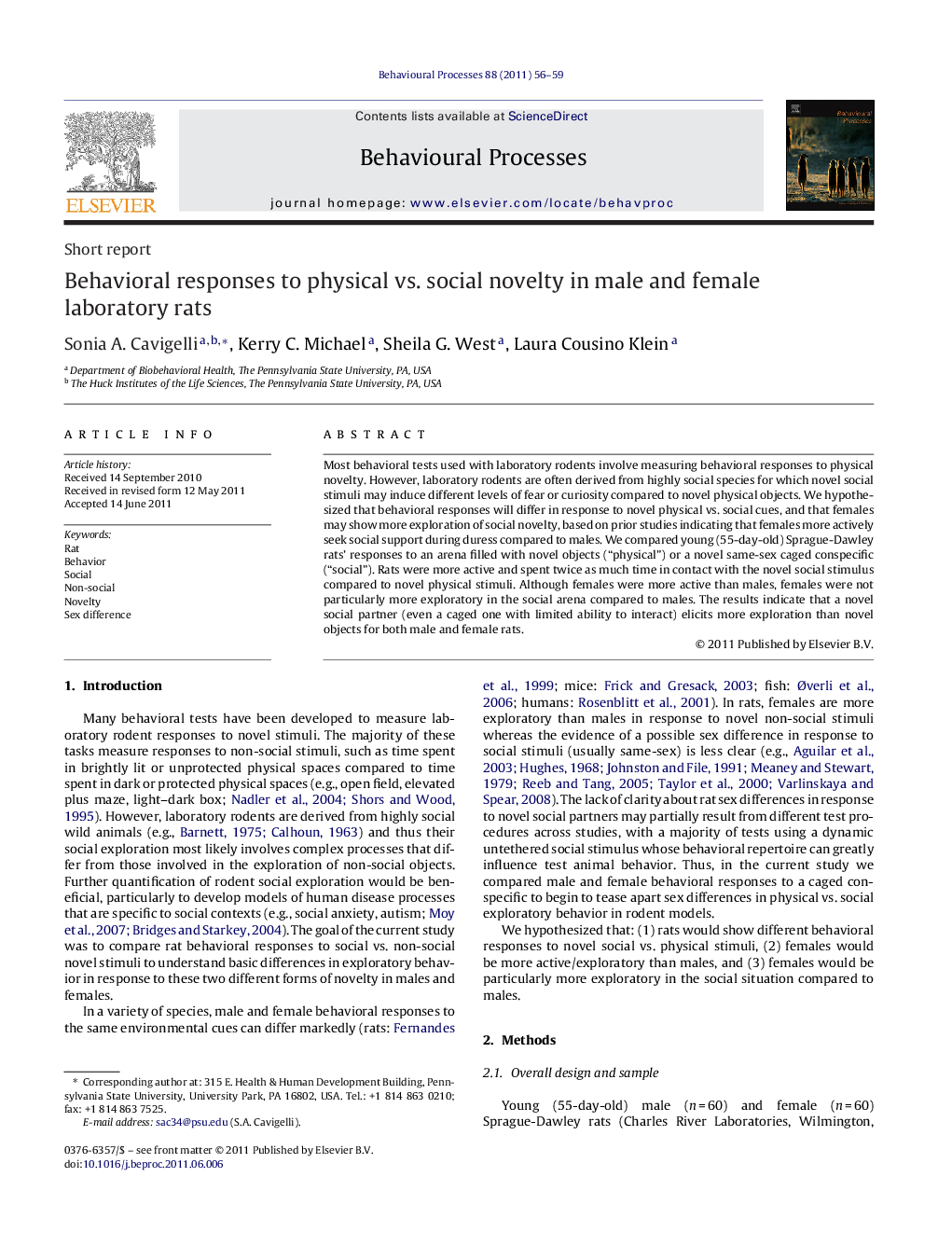| Article ID | Journal | Published Year | Pages | File Type |
|---|---|---|---|---|
| 2427116 | Behavioural Processes | 2011 | 4 Pages |
Most behavioral tests used with laboratory rodents involve measuring behavioral responses to physical novelty. However, laboratory rodents are often derived from highly social species for which novel social stimuli may induce different levels of fear or curiosity compared to novel physical objects. We hypothesized that behavioral responses will differ in response to novel physical vs. social cues, and that females may show more exploration of social novelty, based on prior studies indicating that females more actively seek social support during duress compared to males. We compared young (55-day-old) Sprague-Dawley rats’ responses to an arena filled with novel objects (“physical”) or a novel same-sex caged conspecific (“social”). Rats were more active and spent twice as much time in contact with the novel social stimulus compared to novel physical stimuli. Although females were more active than males, females were not particularly more exploratory in the social arena compared to males. The results indicate that a novel social partner (even a caged one with limited ability to interact) elicits more exploration than novel objects for both male and female rats.
► Social novelty elicits more activity than physical novelty in male and female rats. ► Females are more active than males in both a novel social and physical situation. ► Females and males are equally more active in a novel social vs. physical situation.
